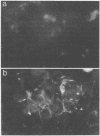Abstract
A virus-specific cell surface antigen(s) was detected on mouse adenovirus-infected cells by the immunofluorescent antibody technique. It was demonstrated in infected cells regardless of the mouse strain or animal species used. It became detectable on the cell surface about 6 h postinfection and was demonstrated in 90% of infected cells at 24 to 36 h postinfection. On the other hand, intracellular capsid antigens became detectable by the immunofluorescent antibody technique at about 24 h postinfection. Since it was also detected on virus-infected cells treated with 5′-fluorodeoxyuridine to block viral deoxyribonucleic acid synthesis, it was synthesized at the early stage of infection and may not be a virus structural component. The relationship between this serologically detectable cell surface antigen(s) and cell-mediated immune response to virus infections is discussed.
Full text
PDF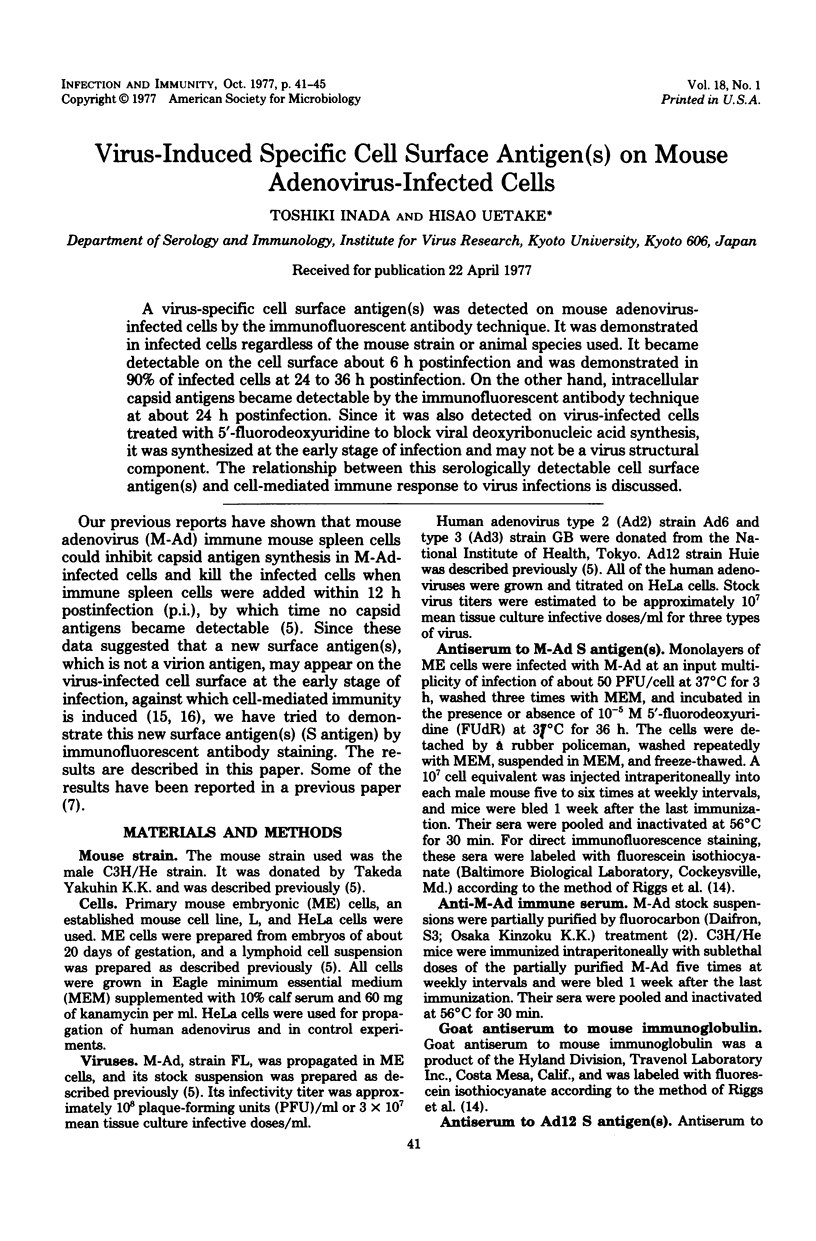
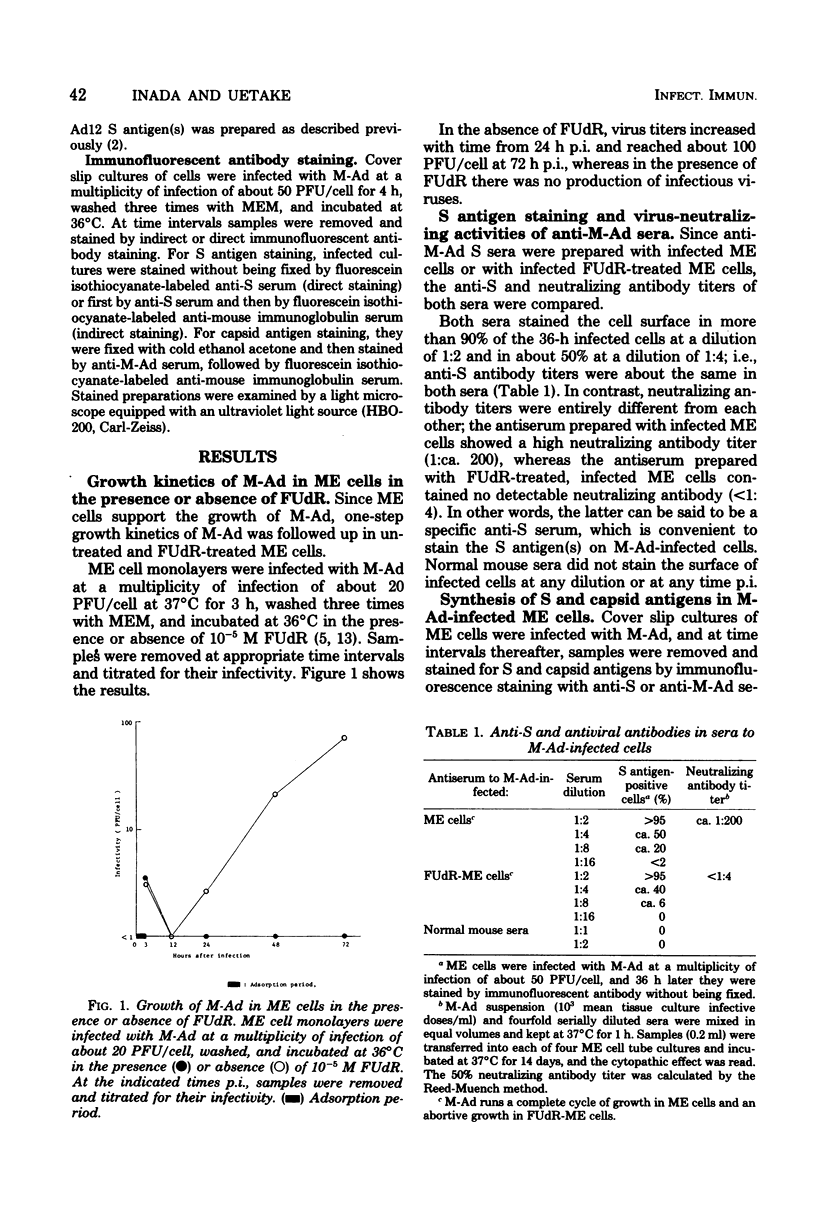
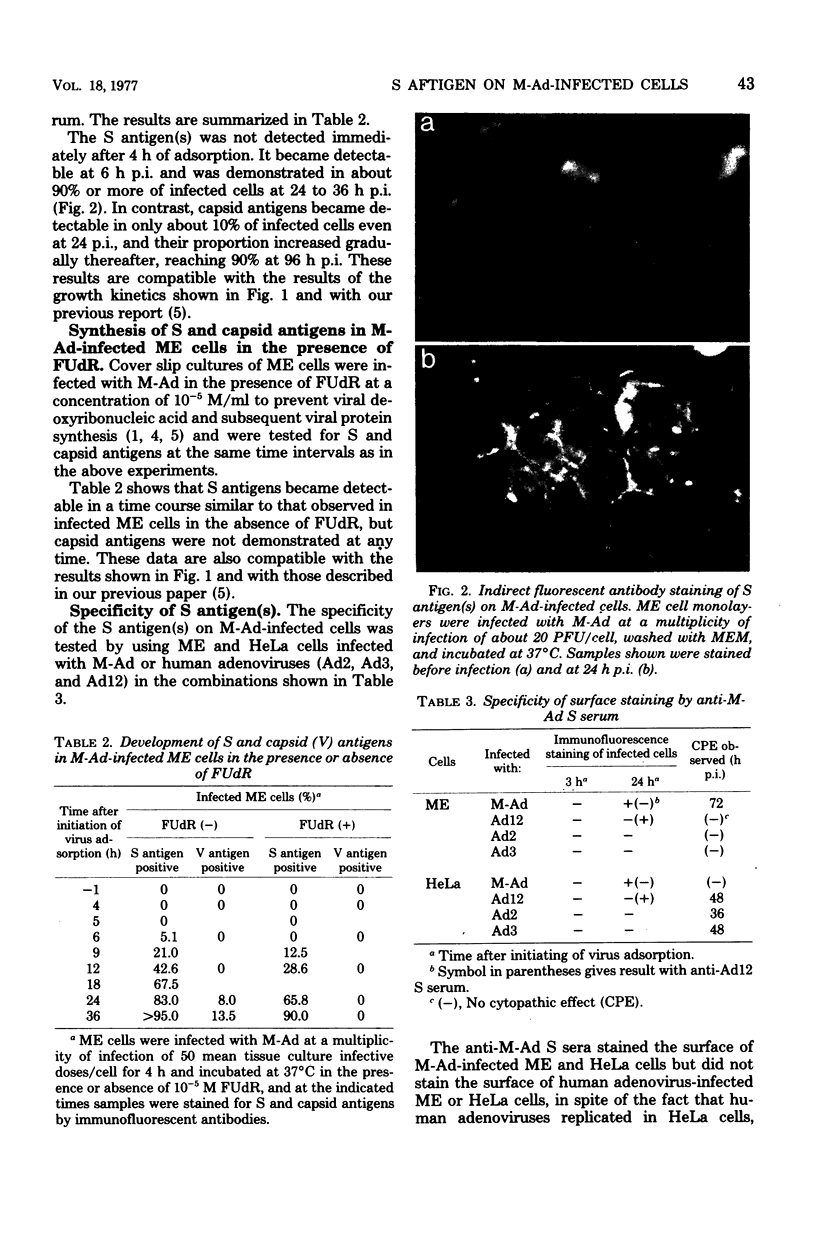
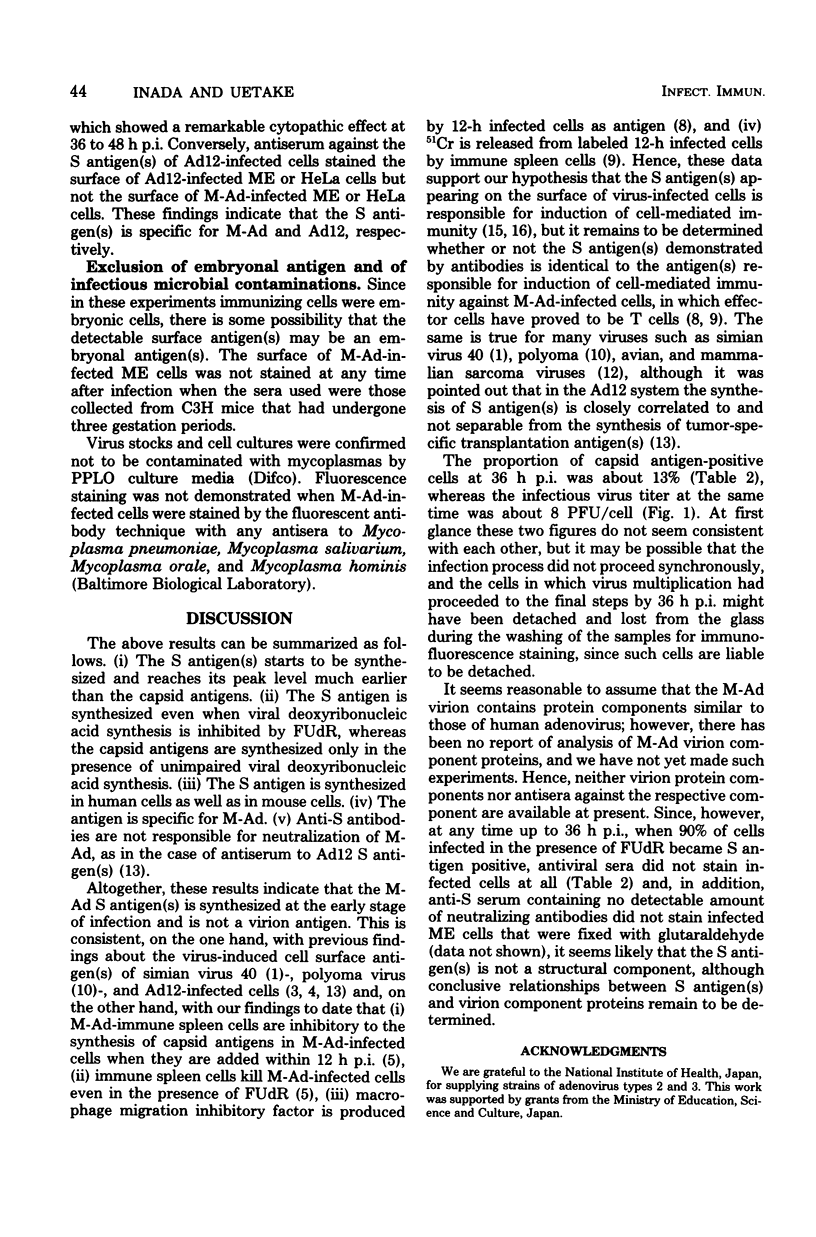
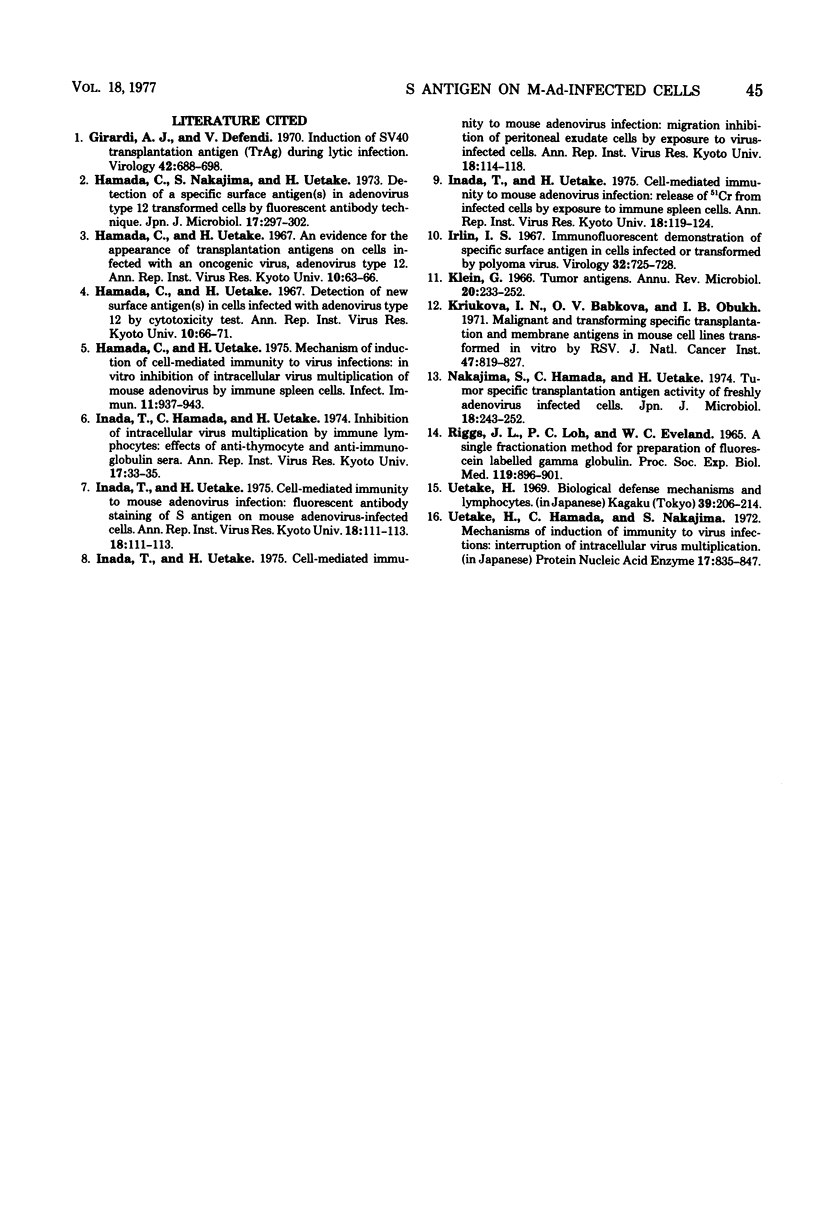
Images in this article
Selected References
These references are in PubMed. This may not be the complete list of references from this article.
- Girardi A. J., Defendi V. Induction of SV40 transplantation antigen (TrAg) during the lytic cycle. Virology. 1970 Nov;42(3):688–698. doi: 10.1016/0042-6822(70)90314-4. [DOI] [PubMed] [Google Scholar]
- Hamada C., Nakajima S., Uetake H. Detection of a specific surface antigen(s) in adenovirus type 12-transformed cells by fluorescent antibody technique. Jpn J Microbiol. 1973 Jul;17(4):297–302. doi: 10.1111/j.1348-0421.1973.tb00776.x. [DOI] [PubMed] [Google Scholar]
- Hamada C., Uetake H. Mechanism of induction of cell-mediated immunity to virus infections: in vitro inhibition of intracellular multiplication of mouse adenovirus by immune spleen cells. Infect Immun. 1975 May;11(5):937–943. doi: 10.1128/iai.11.5.937-943.1975. [DOI] [PMC free article] [PubMed] [Google Scholar]
- Klein G. Tumor antigens. Annu Rev Microbiol. 1966;20:223–252. doi: 10.1146/annurev.mi.20.100166.001255. [DOI] [PubMed] [Google Scholar]
- Kryukova I. N., Babkova O. V., Obukh I. B. Malignant and transforming activity of Rous sarcoma virus (RSV). 3. Detection of tumor-specific transplantation and membrane antigens in mouse cell lines transformed in vitro by RSV. J Natl Cancer Inst. 1971 Oct;47(4):819–827. [PubMed] [Google Scholar]
- Nakajima S., Hamada C., Uetake H. Tumor-specific transplantation antigen activity of freshly adenovirus-infected cells. Intercurrent immunization against viral tumorigenesis with virus-infected cells. Jpn J Microbiol. 1974 May;18(3):243–252. doi: 10.1111/j.1348-0421.1974.tb00952.x. [DOI] [PubMed] [Google Scholar]
- TEVETHIA S. S., KATZ M., RAPP F. NEW SURFACE ANTIGEN IN CELLS TRANSFORMED BY SIMIAN PAPOVAVIRUS SV40. Proc Soc Exp Biol Med. 1965 Jul;119:896–901. doi: 10.3181/00379727-119-30330. [DOI] [PubMed] [Google Scholar]
- Uetake H., Hamada C., Nakajima S. [Mechanism of induction of immunity to virus infections: interruption of intercellular virus multiplication]. Tanpakushitsu Kakusan Koso. 1972 Nov;17(11):835–847. [PubMed] [Google Scholar]



